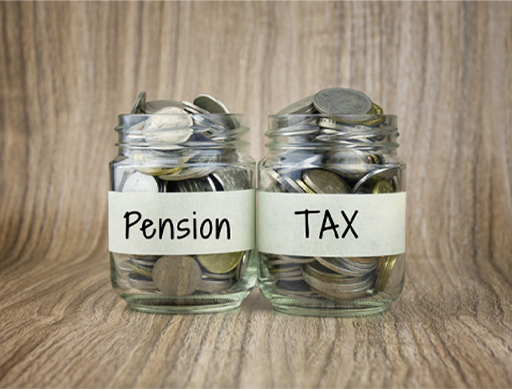6 Understanding pension tax allowances
The tax limits for pensions have been changing in recent years. What are the key details you need to know?
You get tax relief on your contributions: a key benefit of saving in a pension
You get income tax relief on the contributions, up to an annual limit set by the government (these apply to those in defined benefit schemes too). In plain English, it means the government tops up your pension, which is great. Say you are a basic rate taxpayer and you put £80 into your pension of your own cash – what actually happens is £100 goes in. That’s because if you earn £100 you’ll only see £80 of it after tax, so the government puts the £20 difference in your pot.
For most people, all tax relief will likely be at the 20% level, but if you are a higher or top rate taxpayer, you are entitled to additional tax relief up to the level of the tax rate you pay, be that 40% or 45%. However, you may need to claim that additional money back from HMRC if your occupational scheme is not already set up to automatically take the full relief.
Some occupational schemes also let you claim National Insurance relief via what is called ‘salary sacrifice’, and these are automatically set up to give employees their full tax relief entitlement whatever tax band they are in. Here, your employer will put aside the portion of your salary you want to put in a pension, and deposit it for you from your pre-tax earnings so it never gets taxed nor does any National Insurance get taken off.
The annual tax relief allowance
You can currently get income tax relief on all contributions you make as long as you do not pay in more than £60,000 per year or the value of your annual salary, whichever is lower. If you exceed either of those totals you still get tax relief up to that amount but not on anything above.
If your ‘adjusted’ income is more han £260,000 a year your annual limit will fall. Unused relief may be rolled forward for use in the following three years.
You do not get relief on the contributions your employer makes in an occupational scheme.
The lifetime tax allowance
There used to be a lifetime allowance (LTA) for the total of all your personal pension funds whether as a result of contributions or investment growth. In the 2022/23 tax year this was £1,073,100. However this was abolished in the March 2023 budget statement and from 2023/24 no lifetime limit applies. This move was designed, in part, to prevent early retirement by those on high incomes and encourage those already retired to return to work.
From 2024/25 there is, though, a lifetime limit on how much can be taken in pensions in tax-free lump sums. This lump sum allowance (LSA) is £268,275.
Given the complexities and the frequent changes to the taxation of pensions – and particularly given the amount of money that may be involved – it is advisable to seek financial advice when making important decisions about your pension. Links to help you find an adviser were given in Section 5 and a further link is provided at the end of this session.
Activity 6 Is tax relief on pension contributions fair?
Tax relief on pension contributions means that the income taken into account when calculating income tax is reduced. For example, someone earning £60,000 of gross income in a year and making £5,000 of pension contributions will have a taxable income of £55,000. This has been criticised as benefiting high income earners more than low income earners. Why?
Discussion
High income earners – like someone on an income of £60,000 – will have part of their income taxed at the higher rate of tax (40%). Reducing taxable income through pension contributions will save them 40% of the total contributions via reduced income tax. Basic rate taxpayers, by contrast, will save 20%.
On the face of it, this seems unfair to those not on the higher rate of income tax. The counter argument is that those paying the higher rate will be paying more income tax in total than those only paying the basic rate. So, if tax relief is provided, it is only fair that their higher tax burden is reduced by providing relief at the higher rate (of 40%).

